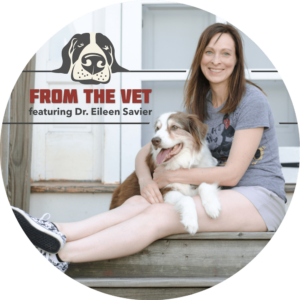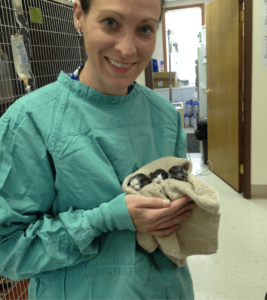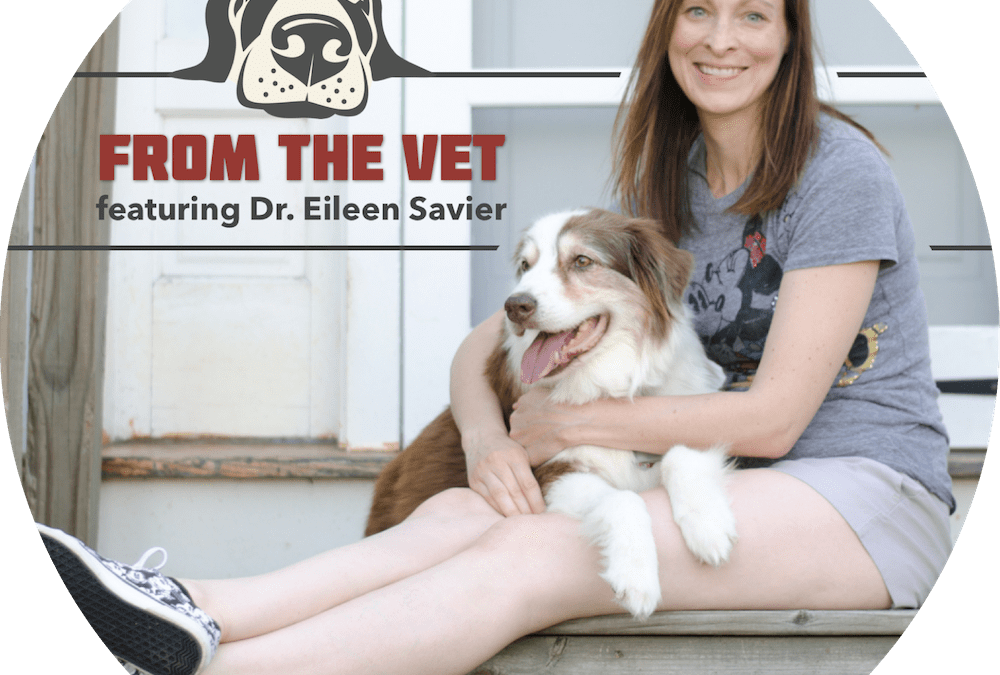[vc_row][vc_column][trx_section box=”yes”][trx_title align=”center” color=”#d9ae4c” weight=”700″]
From the Trenches
[/trx_title][trx_title align=”center” color=”#d9ae4c” weight=”700″]
A Vet’s Story
[/trx_title][trx_title type=”4″ align=”center” color=”#434544″ weight=”700″ bottom=”mini”]by Dr. Eileen Savier CVA, CVCH[/trx_title][vc_column_text]

Presenting Complaint: “He ain’t doin’ right”
It was a Tuesday morning the first time I met Ranger. Ranger was an eight year old Golden Retriever who just had not been himself for a few days. His owner got worried when he didn’t eat his breakfast that morning, as this was not typical for Ranger AT ALL. His dad said he had been more lethargic than normal, but had been eating and drinking normally until that morning. There was no other abnormalities he could tell us about. He had always been a very healthy dog. When I came into the exam room, Ranger was lying on the floor and didn’t get up to greet anyone. Ranger’s dad said this was very unlike him, he had never met a person he didn’t like and rush to greet. When I started to examine Ranger, there were two things that were very distressing – first, Rangers gum color was white instead of a nice pink colors and second, I could feel fluid in his belly and it was very distended. Next, we took x-rays of Ranger which showed an a large amount of fluid in his abdomen. I was able to remove some fluid with a needle and syringe and it was blood. This meant that Ranger was actively bleeding and I needed to find out from where and I need to find out quickly. A FAST scan of his abdomen (targeted ultrasound) showed that Ranger had a large mass on his spleen.
Ranger was in critical condition and we needed to work quickly if we were going to save him. This was very scary for Ranger’s dad. The surgery to remove the spleen must be done quickly and there are several possible complications with the surgery, but Ranger is continuing to lose blood. Unfortunately, we will not know if the mass is cancer or not until the pathologist is able to examine the tissue from the spleen. On top of all this chaos, Ranger was going to need a blood transfusion and overnight monitoring on and EKG to watch for arrhythmias that are common after this type of procedure.
Ranger’s dad was in shock. He just thought that he was “under the weather”, never imagining that he was critically sick and at risk of dying. After discussing all the options that were available for Ranger, his dad decided to pursue surgery and referral for monitoring and packed red blood cell transfusion.
Splenic hematoma’s and nodular hyperplasia are the most common benign masses seen on the spleen (~20-40% of all lesions). Surgery is curative for these lesions and dogs do not need a spleen to survive so after recovery from surgery dogs can live a normal life. Hemangiosarcoma is the most common malignant tumor of the spleen. This generally occurs in large breed dogs between 8 and 10 years of age (German Shepherds, Golden Retrievers, and Poodles). The initial signs associated with splenic masses are often subtle – fatigue, decreased appetite, abdominal dissension and weight loss. If the mass ruptures and bleeding is significant, you will see more obvious signs like white mucous membrane, collapse or even sudden death.
Surgery is the treatment for splenic masses. It is important to stabilize the pet first with fluids and a blood transfusion if needed. Following stabilization the entire spleen is surgically removed and the pet is monitored for post-operative complication and further blood transfusions if needed. The final diagnosis is made when a veterinary pathologist evaluates the affected tissue under the microscope. Approximately 2/3 of dogs with a ruptured splenic mass are diagnosed with hemangiosarcoma.
Benign splenic masses are cured with surgery. Unfortunately, survival times with surgery alone for dogs with hemangiosarcoma maybe as short as 2-3 months. Chemotherapy may increase survival times (6-8 months) but survival after one year is less than 10%. Dogs with hemangiosarcoma usually die from spread of the disease (metastatic disease).
Thankfully Ranger’s mass was benign, he received one transfusion and was back home with his family ~48 hours after surgery!
A side note about Ranger’s case: Ranger’s family had pet insurance and that covered 80% of Ranger’s total bills which were over $4,000.00. His family would not have been able to pursue treatment for him without this! If you pet is not covered, I would urge you to look into pet insurance.
Just one of many cases in a day….If your veterinarian seems distracted, is late to your appointment, or your wellness visit is short just remember Ranger maybe in the room next to you. Be kind to your veterinarian, the support staff, and other pet parents you meet.[/vc_column_text][/trx_section][/vc_column][/vc_row][vc_row css=”.vc_custom_1533135180690{margin-top: 40px !important;}”][vc_column css=”.vc_custom_1533134942241{background-color: #d9ae4c !important;}”][trx_title type=”2″ align=”left” color=”#f6f2e4″ left=”20″ right=”20″]About Dr. Eileen Savier[/trx_title][vc_column_text css=”.vc_custom_1533135315368{padding-right: 20px !important;padding-bottom: 30px !important;padding-left: 20px !important;}”] Barks & Recreation is proud to feature Dr. Eileen Savier CVA, CVCH as our Veterinary Blogger in our “From the Vet” Series. Currently part of the team of doctors at Keystone Veterinary Clinic, Dr. Savier is a 2012 Graduate of the Ross University School of Veterinary Medicine, She completed her clinical experience at The Ohio State University and after veterinary school she pursued further education and certification in Veterinary Acupuncture, Chinese Herbal Medicine, and Fear Free veterinary visits. Dr. Savier has a special interest in integrative medicine, animal behavior, and internal medicine and is committed to improving animal health care by integrating Eastern and Western philosophies. She enjoys working with fearful & aggressive dogs and cats and she has had additional training in low stress handling techniques and encourages positive reinforcement during exams and procedures. Her clinical interests include pain management, animal behavior, geriatric patient care, and internal medicine. Dr. Savier is a member of the following associations:
Barks & Recreation is proud to feature Dr. Eileen Savier CVA, CVCH as our Veterinary Blogger in our “From the Vet” Series. Currently part of the team of doctors at Keystone Veterinary Clinic, Dr. Savier is a 2012 Graduate of the Ross University School of Veterinary Medicine, She completed her clinical experience at The Ohio State University and after veterinary school she pursued further education and certification in Veterinary Acupuncture, Chinese Herbal Medicine, and Fear Free veterinary visits. Dr. Savier has a special interest in integrative medicine, animal behavior, and internal medicine and is committed to improving animal health care by integrating Eastern and Western philosophies. She enjoys working with fearful & aggressive dogs and cats and she has had additional training in low stress handling techniques and encourages positive reinforcement during exams and procedures. Her clinical interests include pain management, animal behavior, geriatric patient care, and internal medicine. Dr. Savier is a member of the following associations:
- American Veterinary Medical Association (AVMA)
- International Veterinary Academy of Pain Management (IVAPM)
- American Association of Feline Practitioners (AAFP)
- American Veterinary Society of Animal Behavior (AVSAB)
- American Association of Traditional Chinese Veterinary Medicine (AATCVM)
- Ohio Veterinary Medical Association (OVMA)
Dr. Savier shares her home with two (soon to be three) dogs, two cats, and a toddler. She lovingly refers to her two dogs as Coconut Retrievers as they were rescue dogs she brought home from the island of St. Kitts. In her free time she enjoys spending time with her family, going to the beach, and planning her next Disney vacation.
Join us every month for Dr. Savier’s “From the Vet” series to get more information related to the health and welfare of your furry family members![/vc_column_text][/vc_column][/vc_row]



